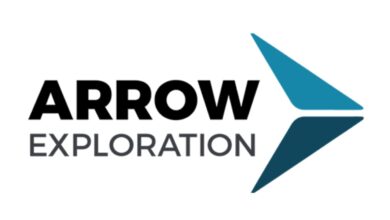Offline operations in the Eagle Ford help Marathon Oil to reduce flat time on critical path of drilling rig
Field trials of offline surface casing running and offline production casing cementing yield technical successes
By Linda Hsieh, Managing Editor

The beauty of unconventional drilling in North America today is that it is highly repetitive, which gives operators the opportunity over and over again to optimize their processes. The flip side of that coin, however, is that progress is typically incremental because the entire business of North American onshore drilling is already so highly efficient.
“We’re so efficient at our drill rates that a 20% improvement in drilling efficiency – actually making hole – is not anything close to a 20% reduction in flat time,” Adrian Binnion with Marathon Oil said in a presentation at the IADC Q1 2018 Drilling Engineers Committee Technology Forum on 21 March in Houston. In the Eagle Ford, the company recently turned to offline surface casing running and offline production casing cementing as part of efforts to eliminate the flat time that is traditionally on a rig’s critical path. Both field trials resulted in technical successes.
The objective of these efforts was to reduce overall cycle times and, in turn, dollar per foot. “We will drill a well slower if we can still reduce the overall cost of drilling the well. Dollar per foot is king,” Mr Binnion said.
Back in Q4 2015, Marathon began cementing its 9 5/8-in. surface casing offline in the Eagle Ford; the process is now a standard procedure and eliminates approximately 4.5 hours of flat time per well, with no additional costs incurred. “At that point, we said, what else can we take offline? The next logical step was to actually prove that we could run our surface casing offline.”
The expectation was to save approximately 11.5 hours of rig time per well while running casing offline at a cost that creates a net economic value – again, back to the dollar per foot. The procedure called for drilling the 12 ¼-in. surface hole section, typically 5,000- to 6,000-ft MD. “Nearly all of our wells at this point are two strings – surface casing down to 5,000 to 6,000 ft and then production casing down to TD.”
The crew would then circulate the hole clean and trip out, pull the bottomhole assembly above ground level and skid the rig to the next well. They would then run 9 5/8-in. surface casing with a 350-ton crane, then land out the surface casing and pump the offline surface cement job.
The procedure called for no movement of the crane boom once it was centered over the wellbore. The crane was outfitted with bales and elevators, as well as purpose-built 2-in. endless plasma slings; the elevators were latched normally. Conventional casing equipment and a jib crane were used to hang power tongs, and a catwalk trough and skate was used to deliver casing.
So far, this offline surface casing running concept has been performed on three wells – on three- and five-well pads with a skid-rail type rig. Casing run time with the crane on well #1 was 18 hours, then reduced to 16 hours on well #2 and finally to 13.5 hours on well #3. Time span from the rig skidding off to beginning casing running shortened from six hours on well #1 to 2.5 hours by well #3.
These field trials proved that the concept was possible despite strong winds in the area. “In fact, on well #3, we had 17 mile-per-hour winds and gusts up to 33 miles per hour, and we didn’t have any issues,” Mr Binnion said.
Considering future developments, he noted that Marathon will be looking toward performing offline surface casing running on multiple wells on a pad. Because of the additional costs incurred by the offline equipment needed in this type of operation, such as the crane, there was only a small margin between those added costs and the rig cost savings achieved. “In order to make it work, you have to be super consistent. If you run into any issues, it starts to eat into your economic benefit.”
After these trials, Marathon then turned to offline production casing cementing, which is more complicated than offline surface casing cementing due to the additional well control issues that have to be considered. Risk mitigation was recognized early on as a critical step in this effort, Mr Binnion noted. Peer reviews and risk assessments were conducted by multiple groups within Marathon, including the HSE group, and the input of rig contractors and cementing services provider were also considered. The operator then worked with its wellhead provider to develop a solution that would maintain well control barriers at all times.
The procedure called for the cementing spool to be nippled up and tested, then for the BOP stack to be nippled up and tested on top of that. The 8 ½-in. production hole section would then be drilled, the casing-running equipment rigged up, and the casing run. After the 5 ½-in. casing is landed and circulation is established, the decision would be made on whether to proceed with offline cementing. “It’s key that we are circulating the bottoms up before we actually commence going forward at this point,” Mr Binnion said.
Pumps-off time then begins here, with the running tool being released from the casing hanger and the landing joint being laid out. The crew would then run the 13 5/8-in. cement pack-off with the TIW valve and locked into place. Once circulation is established across the cementing spool, pump-off time ends. “At that point we can go ahead and nipple down the BOP equipment and skid the rig over to the next well, then rig up our work platform and cementing iron.”
The plan then called for the 5 ½-in. production casing to be cemented, the plug to be bumped and the floats to be verified as holding. The crew would then wait on cement to verify there’s no flow on the well. The cementing iron would then be rigged down and the backpressure valve set, and the work platform can be rigged down, as well.
The cementing pack-off and cement spool assembly are then disconnected, followed by the 11-in. pack-off being installed and tested using a hydraulic pack-off press. “Because the rig is not there, you don’t have any way to apply weight to that pack-off to get it to set, so we came up with the hydraulic press solution,” Mr Binnion noted.
At that point, the tubing head can be installed and tested, and then a temporary abandonment cap can be installed.
The field trial for this concept has been performed on five wells to date, conducted in Q4 2016 and Q1 2017. “Those five wells consisted of two partial runs where we actually had the BOP stack in the place, nippled up, and the flow path through the cementing head on the rig floor,” Mr Binnion said. These were followed by three full runs where the BOP was nippled down and the rig was off the well; flow path went through the cementing head at ground level.
All field trials were performed on the same skid-rail type rig, although Mr Binnion noted that Marathon has since then proven the system on a walking rig, as well.
Best performance in these trials was achieved on well #5, where four hours of rig time were saved compared with through-the-rig cementing operations. Pumps-off to pumps-on time was 40 minutes, and pumps-off to skid time was 1 hour and 15 minutes.
Like offline surface casing running, offline production casing cementing proved to be a technical success, and the team found that rig time could be saved as soon as the fifth iteration of the offline operation. “We’ve been doing this on one rig line trying to optimize the surface system, as well as the cementing spools… We want to get the design perfected before we order more,” Mr Binnion said. Marathon also will be working in the coming months to streamline the process of skidding the rig and rigging up cementing equipment, as well as building crew familiarity with the operation. DC





